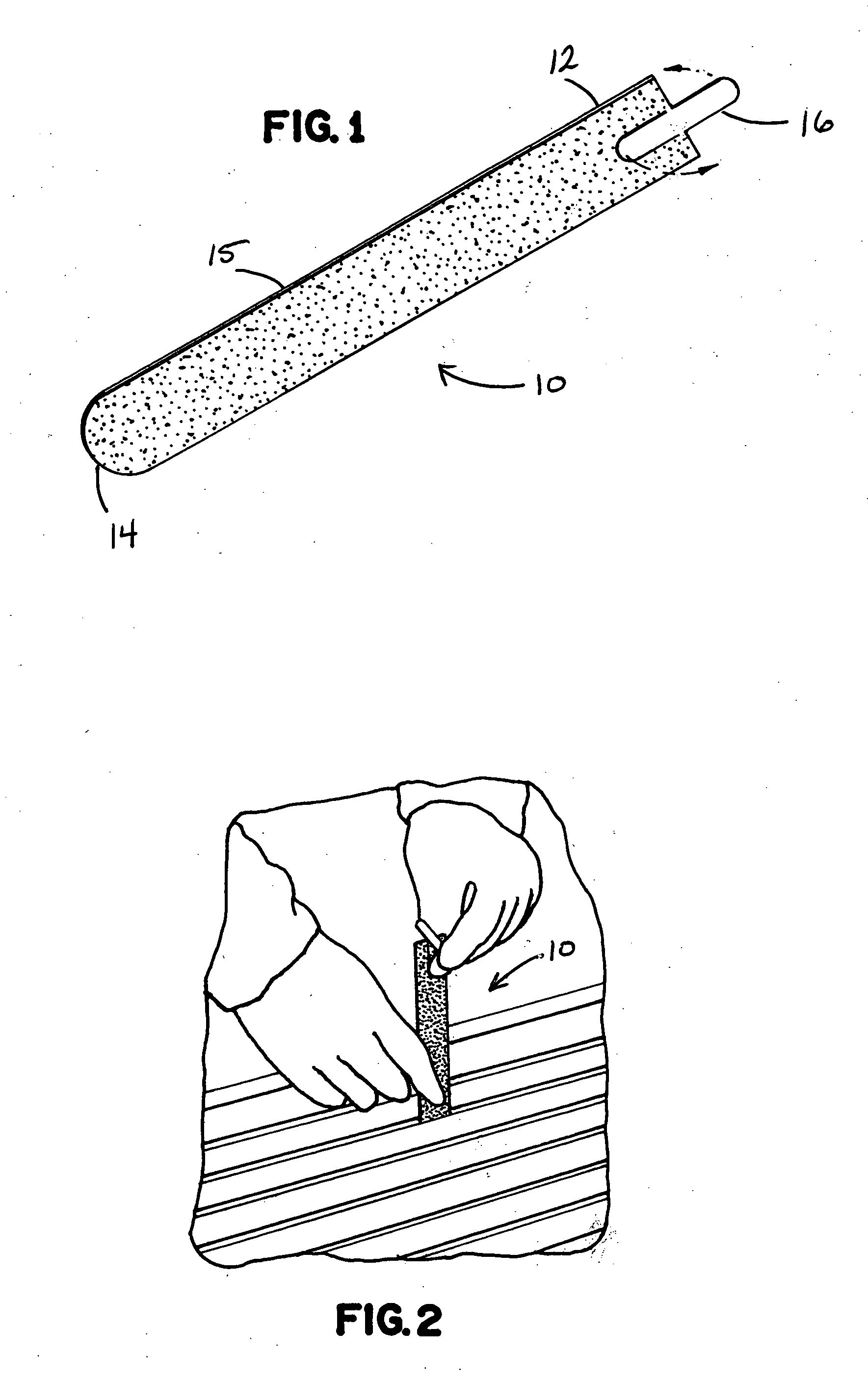Pesticide strips for control of mites in honeybees
a technology for controlling mites and honeybees, which is applied in the field of compounding for the control of parasitic mites in honeybee hives, can solve the problem that the strip does not provide extended low-dose pesticides
- Summary
- Abstract
- Description
- Claims
- Application Information
AI Technical Summary
Benefits of technology
Problems solved by technology
Method used
Image
Examples
example 1
[0028] Coumaphos insecticide was compounded with “Poly-Ox” water soluble resin from Dow Chemical Co. to form a mixture having 10% active ingredient.
example 2
[0029] Fluvalinate insecticide was compounded with a sugar gel to form a mixture having 10% active ingredient.
[0030] The compounds were manually blended with a stir stick while heated so that the active ingredient (i.e., the insecticide) was thoroughly mixed throughout the carrier. While warm, the compounds were cast in a mold to provide a strip approximately 5 inches long by 2½ inches wide with a thickness of about 0.25 inch. After cooling, the resulting strips were sufficiently rigid to handle.
[0031] The strips were placed in a hive with honeybees for a total of 45 days. Weekly, the strips were visually examined for the extent of degradation, and were weighed. Additionally, the inside of the hive and the area immediately surrounding the hive was visually examined for the presence of dead mites.
[0032] The loss of material from the strips was weekly evident. After 45 days, both experimental strips no longer existed; that is, the strips had completely disappeared. It is believed t...
PUM
 Login to View More
Login to View More Abstract
Description
Claims
Application Information
 Login to View More
Login to View More - R&D
- Intellectual Property
- Life Sciences
- Materials
- Tech Scout
- Unparalleled Data Quality
- Higher Quality Content
- 60% Fewer Hallucinations
Browse by: Latest US Patents, China's latest patents, Technical Efficacy Thesaurus, Application Domain, Technology Topic, Popular Technical Reports.
© 2025 PatSnap. All rights reserved.Legal|Privacy policy|Modern Slavery Act Transparency Statement|Sitemap|About US| Contact US: help@patsnap.com

